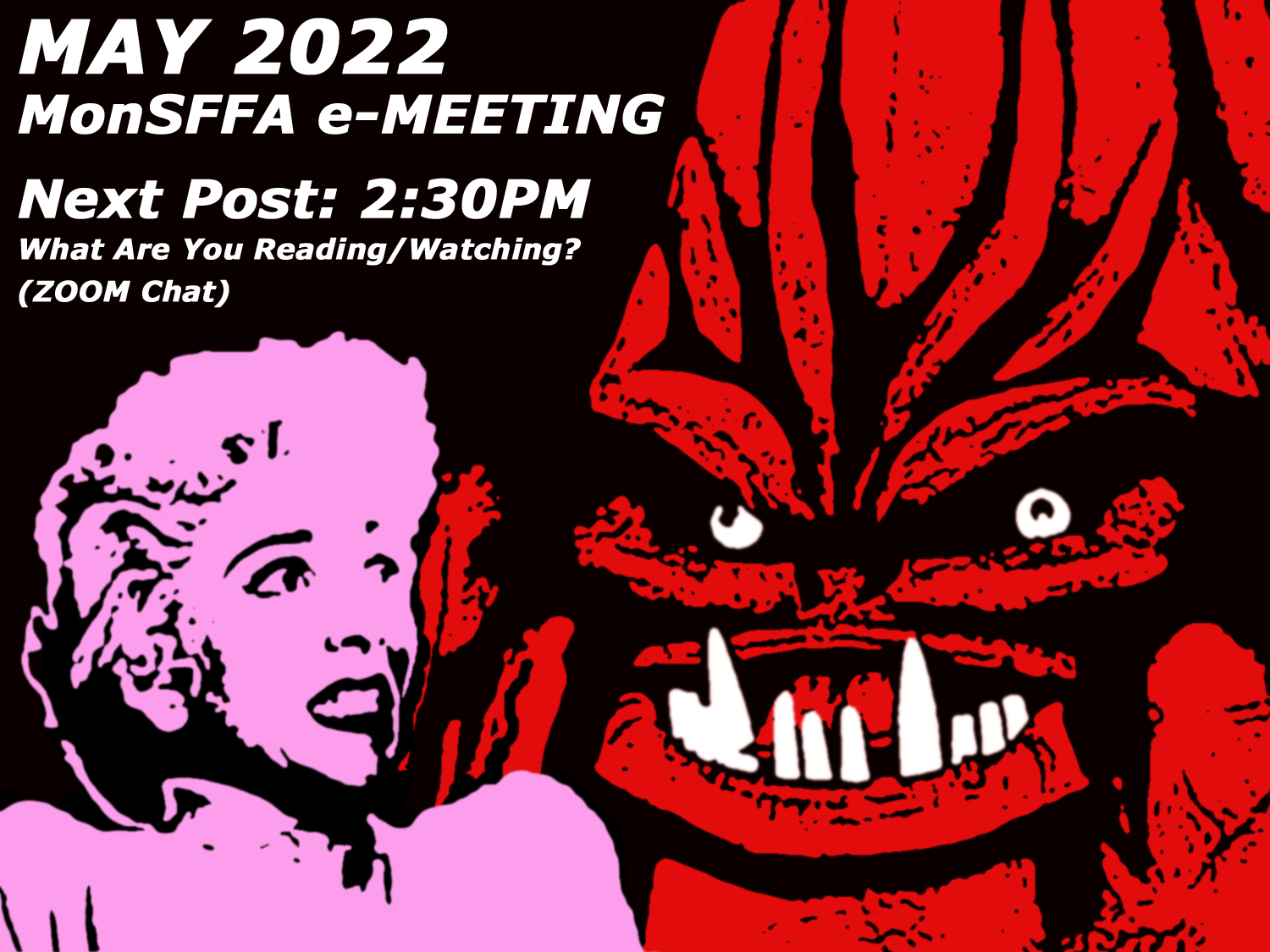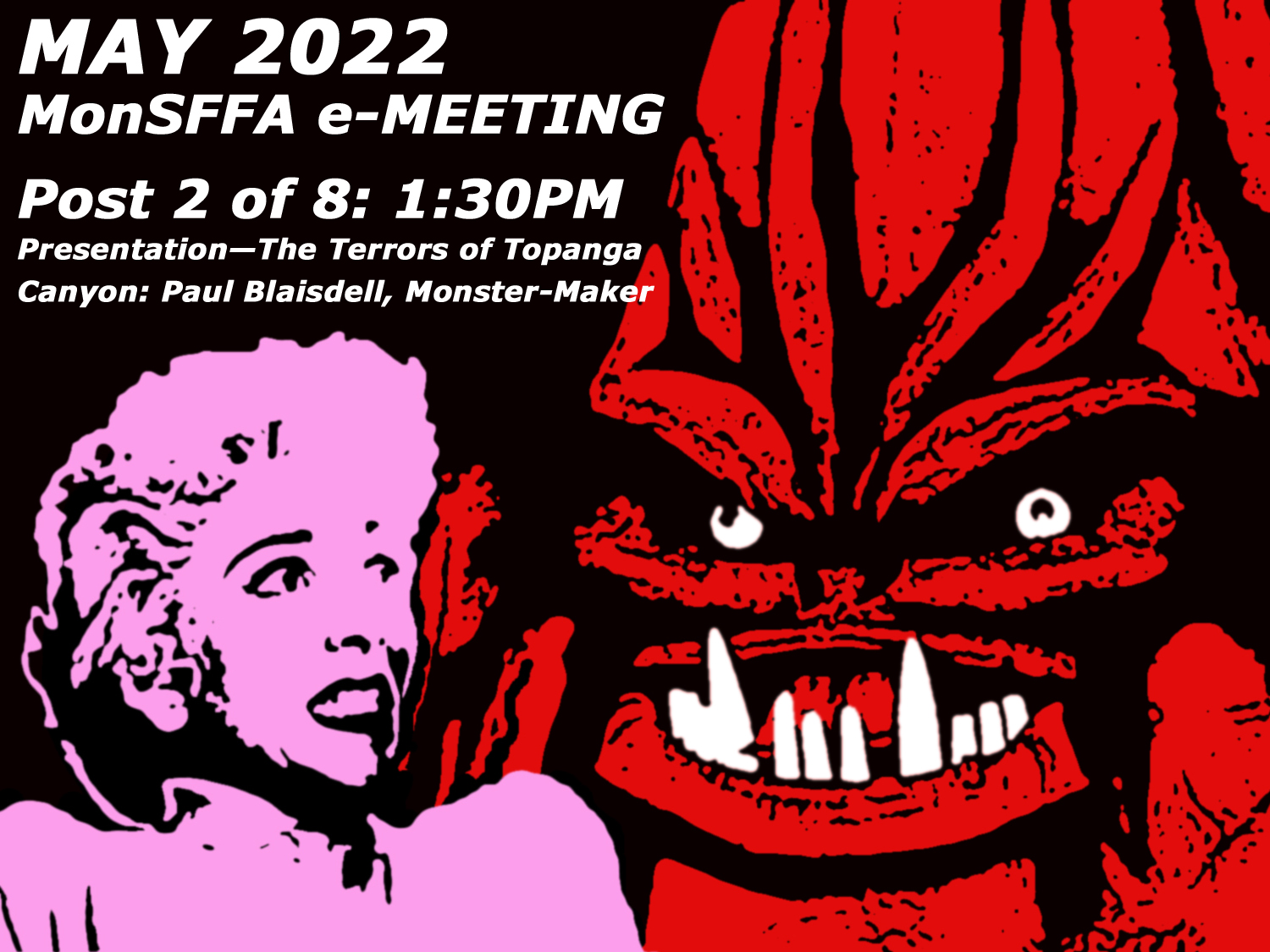5) THE TERRORS OF TOPANGA CANYON, PART I
The chronicle of unsung artist, sculptor, and Hollywood monster-maker and prop fabricator Paul Blaisdell is a bittersweet tale. Blaisdell’s career in motion pictures was brief and, in the end, disillusioning for the man, who walked away from the industry bitter for the experience. It was only after his untimely death of cancer at the age of 55 that he began to gain recognition and appreciation for his imaginative contributions to the then-nascent independent sci-fi/horror film scene.

For a mere half-decade during the 1950s, ably assisted by his devoted wife, Jackie, Blaisdell worked out of the garage of his Topanga Canyon home on the outskirts of Los Angeles creating a succession of memorable beasts, mutants, and aliens that have since become iconic science fiction B-movie monsters. This is the story of Paul Blaisdell and his Terrors of Topanga Canyon!
Born in Newport, Rhode Island, on July 21, 1927, Blaisdell grew up in Quincy, Massachusetts, a suburb of Boston. As a young boy, he often spent Saturday afternoons at the neighbourhood movie theatre, where he enjoyed the spooky cinematic offerings of the day, including Universal Pictures’ “classic horror” releases. He also saw many an aviation film in the company of his father, an airplane buff, who took young Paul to see just about every movie produced having to do with planes and pilots.
An imaginative youngster, Paul demonstrated an above-average faculty for drawing while in grade school. He sketched space monsters and, with an innate gift for visualizing objects in three dimensions, fashioned for himself homemade kites, marionettes, and other such playthings. He assembled model airplane kits and later, as a teenager, progressed to blueprinting and building from scratch his own designs.
As his artistic proficiencies developed, Paul’s simple toolkit of pencils and pens grew to include charcoal, pastels, and paints ranging from watercolours to acrylics to, eventually, oils.
After graduating high school, Blaisdell served in the military and upon his discharge, took advantage of the G.I. Bill to further his education, enrolling in Boston’s New England School of Art, today known as the New England School of Art and Design. Here, he honed his skills.
And here, too, did he meet fellow student Jacqueline “Jackie” Boyle. After graduating college in 1952, Paul and Jackie were married and moved west, to Los Angeles, California, where he took a job with the Douglas Aircraft Company as a technical illustrator. They settled into a house in Topanga Canyon.
During his lunch breaks, Blaisdell would commandeer an office typewriter and develop ideas for science fiction short stories. In the evenings after work, he relaxed by sketching and painting, and before too long, sold one of his works to Bill Crawford’s science fiction pulp magazine, Spaceway. Crawford subsequently bought more of Paul’s paintings and eventually hired him as the publication’s art editor.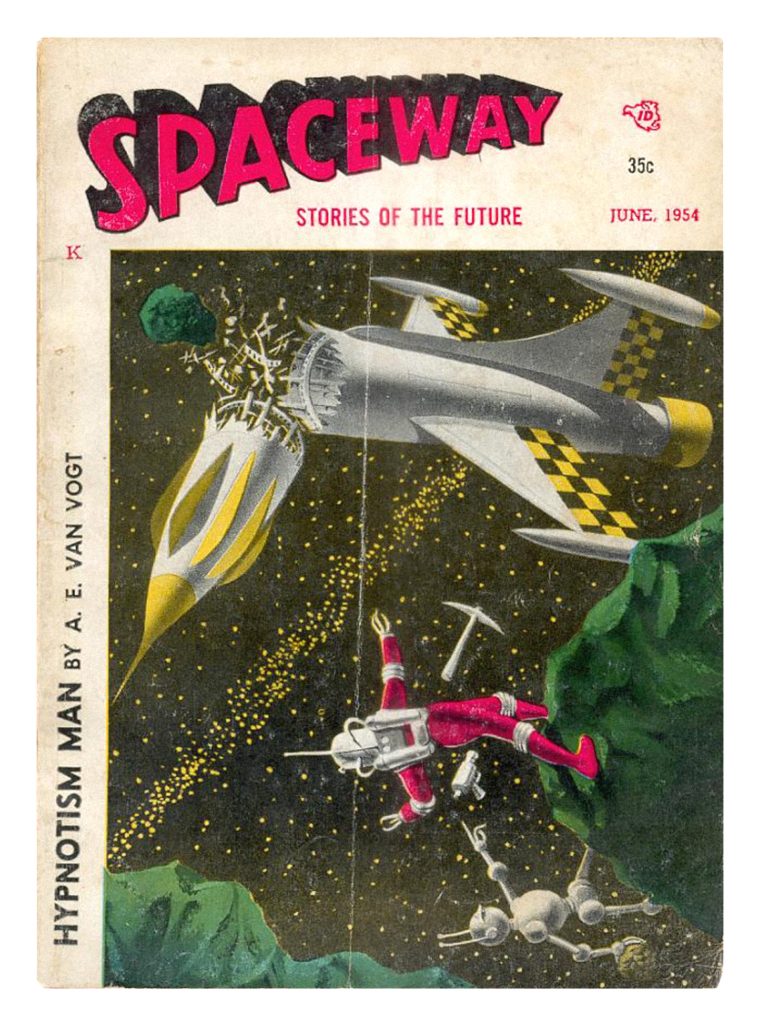
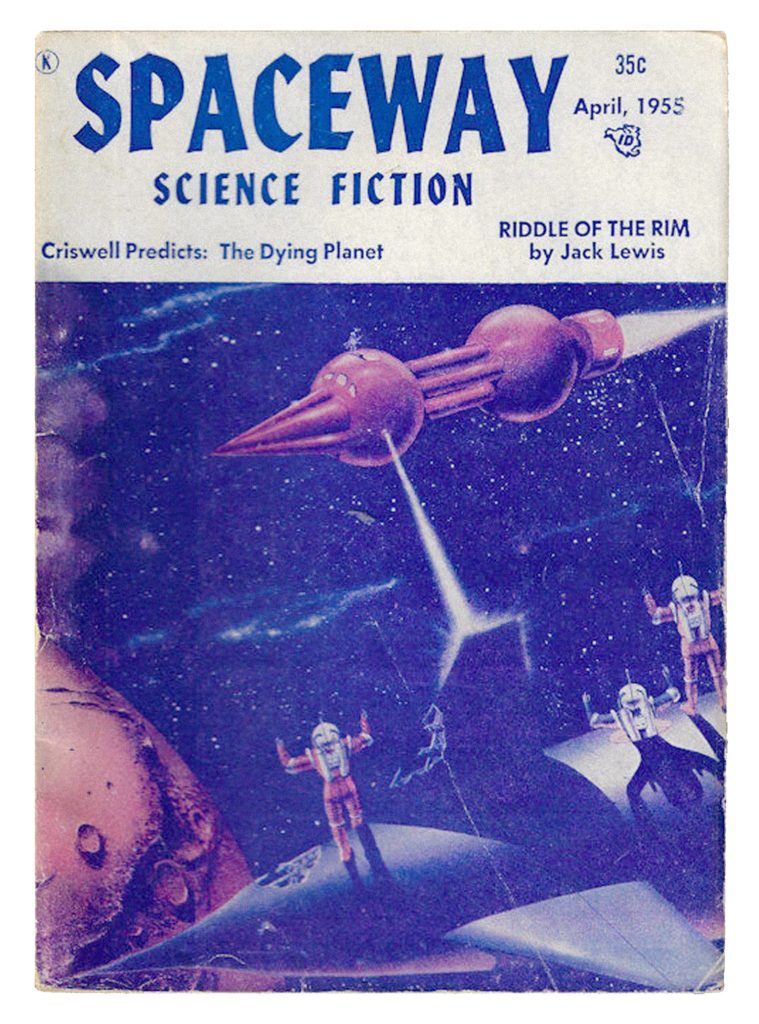
At this time, Crawford was also purchasing articles penned by a local science fiction fan and collector covering the latest science fiction and horror movies. His name was Forrest J Ackerman.
Ackerman, credited with coining the term “sci-fi,” was one of the initiators of science fiction fandom and an originator of what is today called “cosplay.” He was a friend of both writer Ray Bradbury and filmmaker/stop-motion animator Ray Harryhausen, whose respective careers in the field had just begun in earnest. Ackerman later became a science fiction celebrity himself when he teamed with publisher James Warren to turn out Famous Monsters of Filmland magazine beginning in 1958.
Acting as an agent for many of the science fiction authors and artists with whom he was acquainted, Ackerman was suitably impressed with Blaisdell’s artwork, and took him on as a client, leading to book-jacket art commissions and cover illustrations for magazines like Other Worlds and The Magazine of Fantasy and Science Fiction, as well as overseas publications like the Swedish science fiction magazine Häpna! and the German digest Utopia.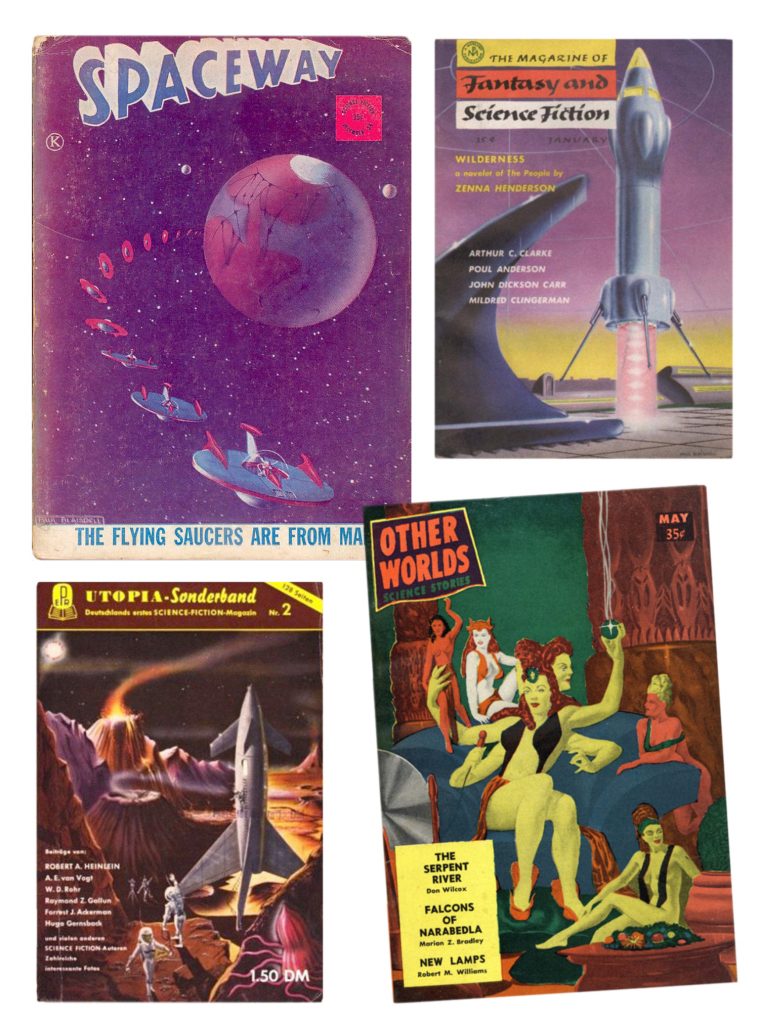
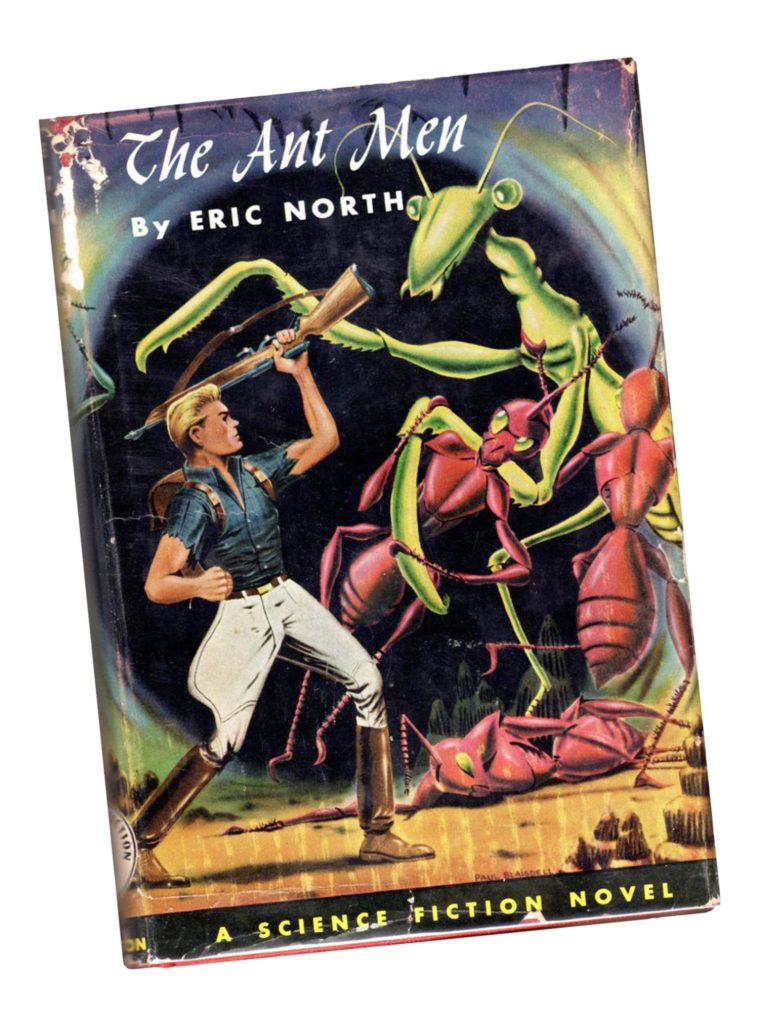
But it was Ackerman’s recommendation of Blaisdell to film producer/director Roger Corman for a special assignment that offered the artist an unexpected opportunity.
Corman was working uncredited on a film for James R. Nicholson and Samuel Z. Arkoff’s American Releasing Corporation, soon to become American International Pictures, and found himself in need of a monster for the project. This picture, The Beast with a Million Eyes, was to be the fledgling company’s first foray into science fiction; it was typical, second-rate, drive-in fare aimed squarely at the lucrative teen market. Released in 1955 to generally poor reviews, the film nevertheless returned about $100,000 at the box office, roughly four times its cost of production.
Tom Filer’s script, written as The Unseen, featured an invisible monster, which perfectly suited the budget-conscious Corman, for here was a monster movie that could be shot without need of ever showing the monster on screen! He anticipated savings galore.
The story involved a metaphysical lifeform from outer space bent on conquering Earth, capable of observing our world through the eyes of lowly animals—hence, The Beast with a Million Eyes—and compelling animal assaults on people! In one scene, a flock of birds under thrall of the Beast attacks a man, predating by almost a decade Alfred Hitchcock’s The Birds.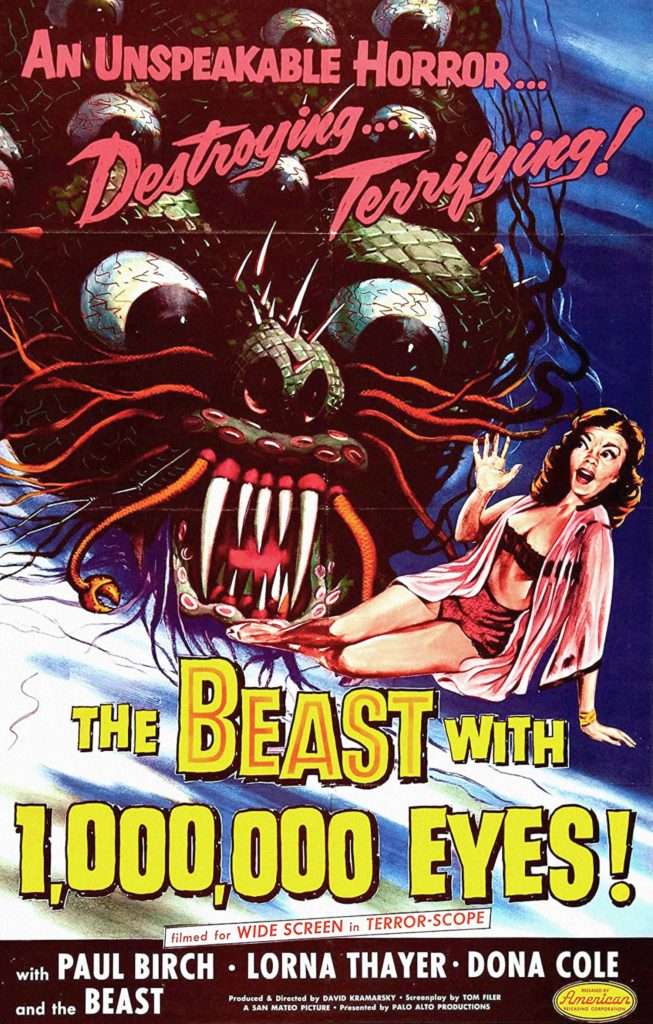
Nicholson, ARC’s marketing man, had come up with the film’s hyperbolic title and pre-sold the movie to exhibitors based on a publicity poster he’d commissioned depicting a fanged, tentacled, multi-eyed monstrosity. This was standard operating procedure for ARC: first produce a slick, promotional package to drum up interest in a film, then solicit a script and shoot the picture! But as was so often the case with such penny-pinching sci-fi productions, the monster or alien depicted in the film poster looked so very much better than the creature that ultimately appeared on screen.
In this case, however, there was no on-screen monster at all, only the disembodied voice of the titular Beast! The film had been shot in eight days and a special screening was set up for exhibitors, who were left perplexed: where was the monster promised by the sensationalistic poster art? Nicholson and Arkoff insisted that additional scenes be shot showing a monster. It was at this point that Corman turned to Forrest J Ackerman for help.
At first, Ackerman suggested his friend Ray Harryhausen as most able to craft a quality monster for Corman, adept as the talented animator was at bringing to life on screen fantastical creatures on a limited budget. But the exceedingly frugal Corman balked at Harryhausen’s fee, worrying, too, about the protracted timeframe associated with the stop-motion technique. Another of Ackerman’s film-industry friends, Jacque Fresco, who had executed the special effects for Project Moonbase (1953), was then proposed, but again, Corman balked at the price. He was looking for someone who would work cheap—really cheap—and fast! His budget was a piddling $200, a bemused Ackerman finally ascertained, an amount clearly preposterous. No self-respecting, professional special effects artist would ever entertain such a pittance!
Ackerman finally endorsed Blaisdell for the undertaking, knowing of the illustrator’s love of science fiction, fertile imagination, and boyhood talent for building aircraft models and homemade puppets. Blaisdell, who had no experience whatsoever with motion picture special effects, was game to try his hand. He read the script and telephoned Corman to discuss details, wanting to fully understand what was required before committing to the task. Corman explained that the monster need only appear for a few seconds, opening his spaceship’s airlock and pointing a ray-gun at the off-screen protagonists before slumping over when shot dead with a rifle! Blaisdell took the job and a quick negotiation saw Corman relent to an additional $200 for materials.
The being Blaisdell created for the film was a finely detailed, 18-inch-tall puppet with the visage of a devil, insect-like antennae protruding from its forehead. Leathery, bat-like wings extended from the creature’s back. A sparkling, high-collared garment and wrist shackles with attached chains completed the alien look. He nicknamed his miniature articulated doll “Little Hercules.”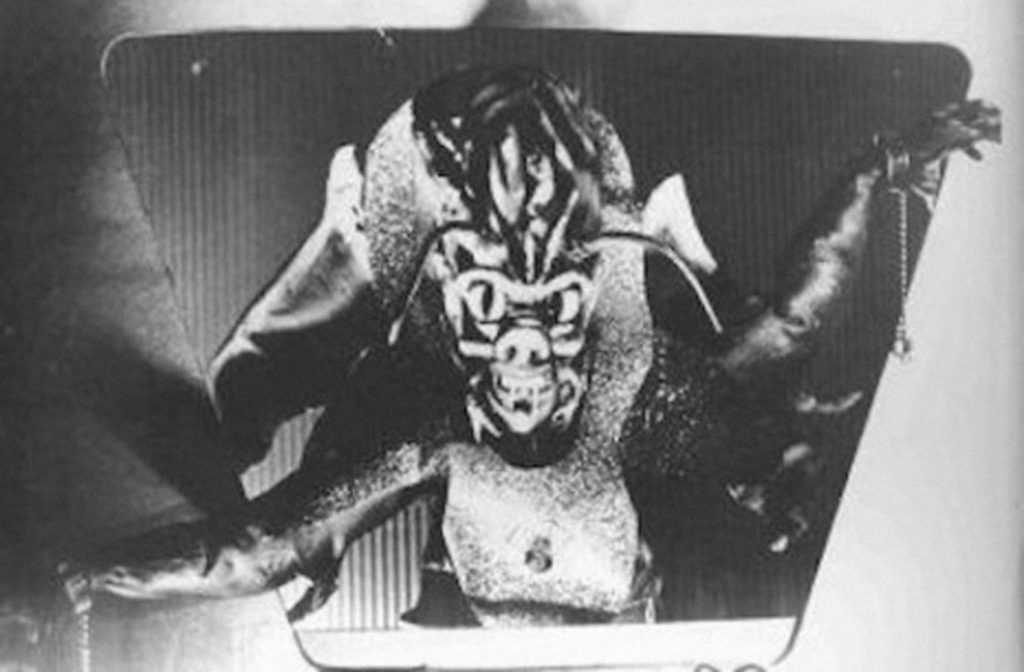
Because the monster of the movie’s title had been established as some kind of invisible energy-thing, Blaisdell reasoned that such an entity would require a corporeal servant to do its bidding. His winged devil, then, was not the Beast, but the Beast’s slave, as suggested by its manacles and chains. That it was clothed in a uniform of sorts, was obviously familiar with the operation of the spaceship, and brandished a weapon inferred advanced intelligence. Blaisdell saw Little Hercules as unwillingly under the control of the Beast.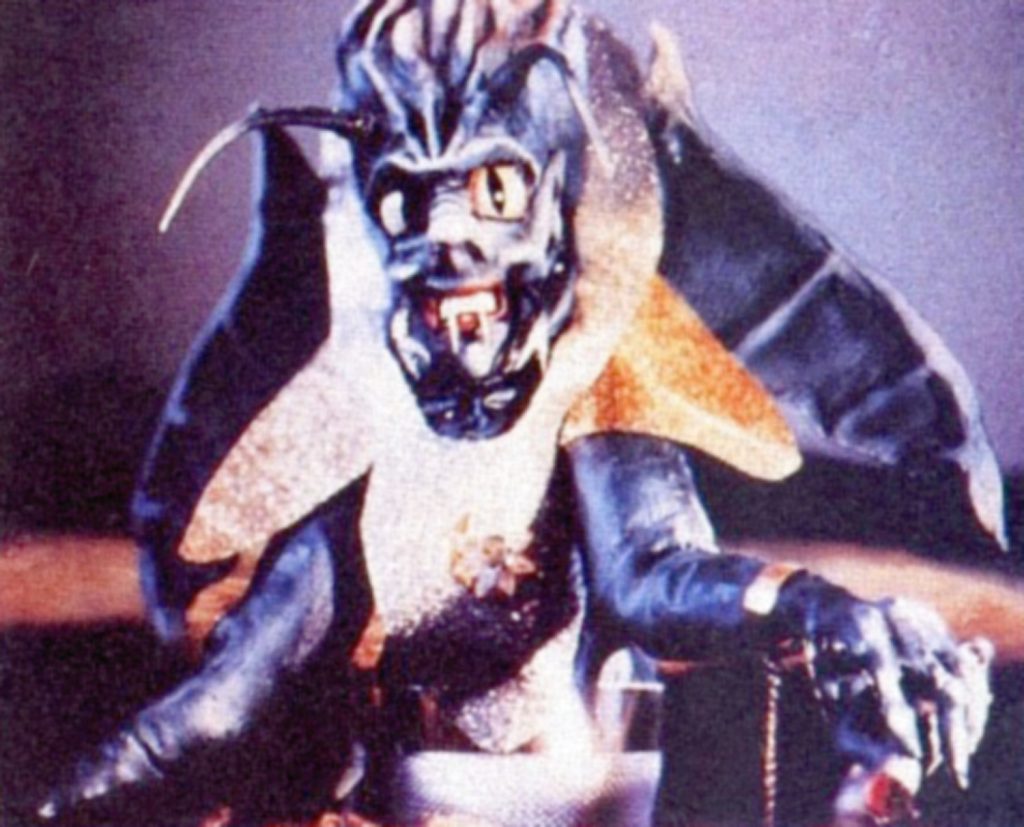
The sequence showcasing the novice monster-maker’s puppet was hastily filmed and, indeed, ran for but a few seconds. “Artistically” superimposed over the footage in the final print was a huge eyeball amid a hazy, swirling vortex, which obscured most of Blaisdell’s fine detail work and hardly satisfied the exhibitors’ want of a monster appearing in the movie.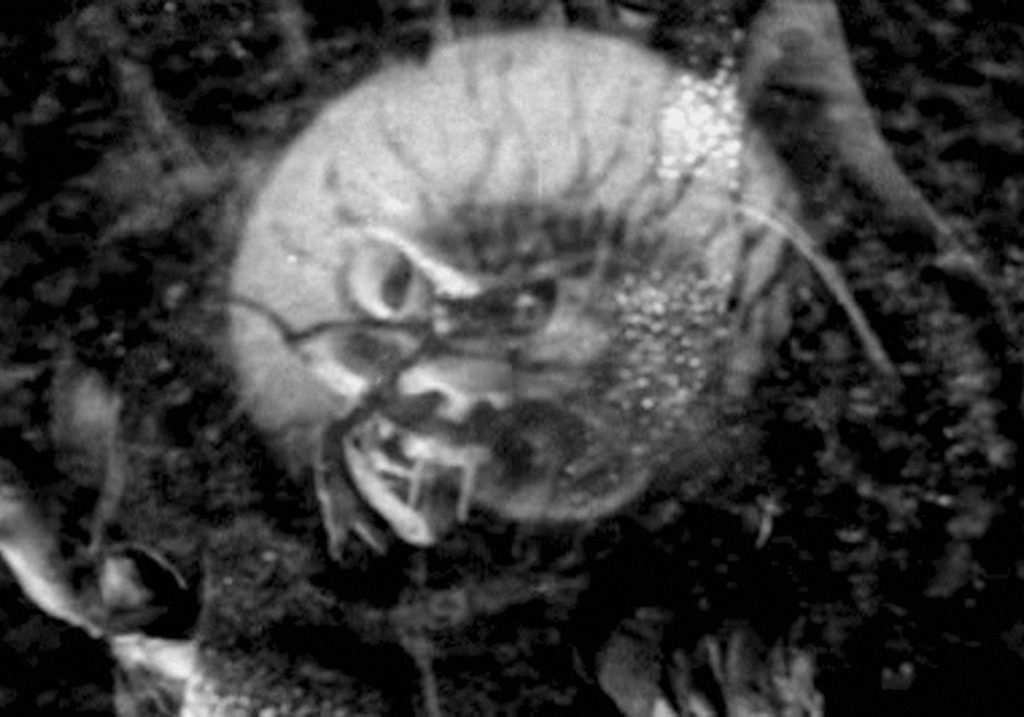
Before Blaisdell could lament the disappointing end result of his labours, he was again called into service by Corman for another sci-fi flick, Day the World Ended, also released in 1955. Corman was now working with more than three times the budget of Beast and Blaisdell’s assignment, here, was to create a complete, head-to-toe monster suit.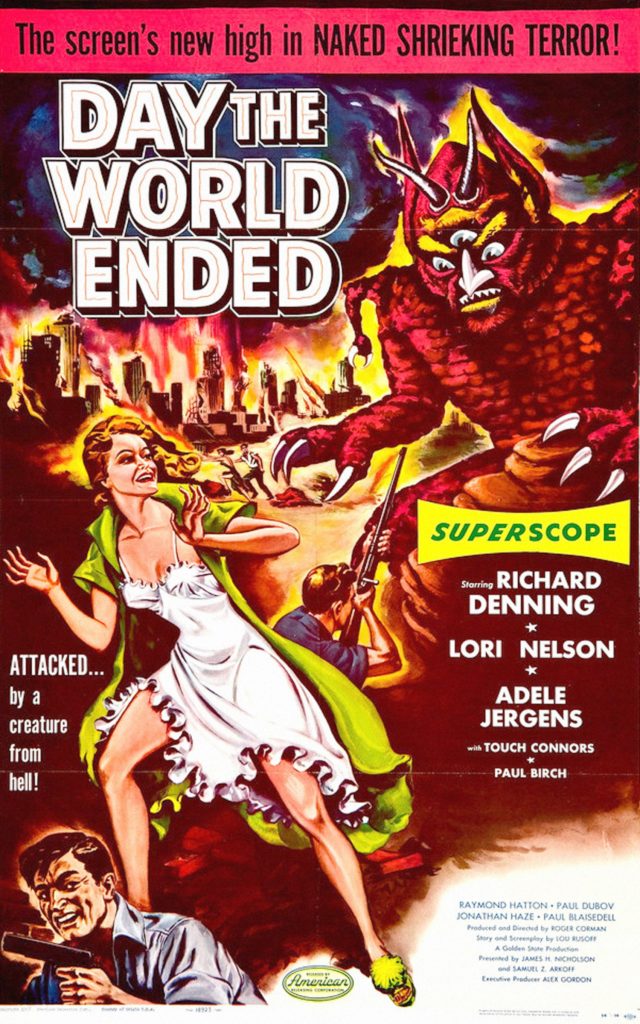
The monster of the 1970-set story is a three-eyed mutant born of an apocalyptic atomic war. The creature stalks a group of survivors sheltered in a house situated within a valley protected from nuclear fallout by the surrounding mountains and prevailing winds.
Paul and Jackie spent a whole week just tearing up sheets of foam rubber into small, irregularly shaped pieces, these to form the mutant’s scales. All of these little bits of foam rubber were then glued to a pair of long-johns coated in a layer of latex rubber, and dyed with ink washes.
In the absence of an actor yet cast as the mutant, Blaisdell made the suit to fit his own five-foot-eight frame. He would end up stepping before the camera to portray the monster he had dubbed “Marty the Mutant.”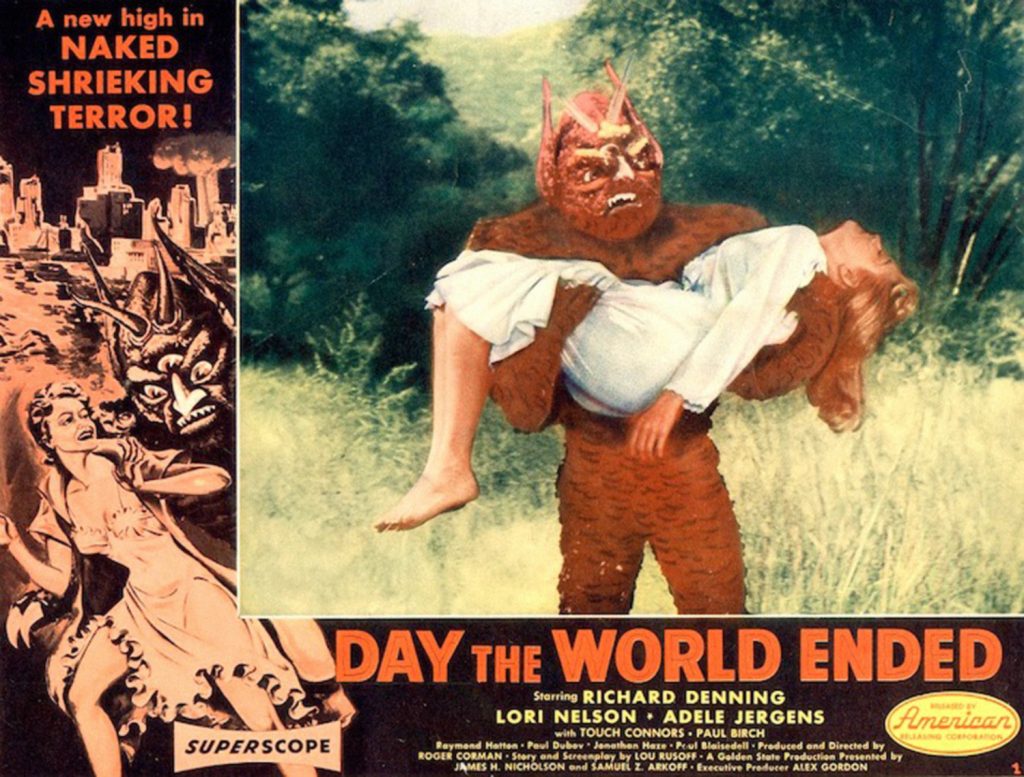
A large foam-rubber breast plate covered in “scales” wrapped around his torso and snapped firmly in the back. Tiny, stunted arms jutted out from each shoulder. First sculpted in clay, then coated in liquid latex rubber, once set, the little arms were gingerly peeled off of the clay master, stuffed with cotton, and glued into place on the suit. The hood-like headpiece was sculpted with plaster and resin over the liner of an army helmet. Painted up as eyes were plastic balls, with teeth and horns completing the detail work. Blaisdell’s line of sight when wearing the suit was through the open mouth; he wore dark sunglasses to mask his presence.
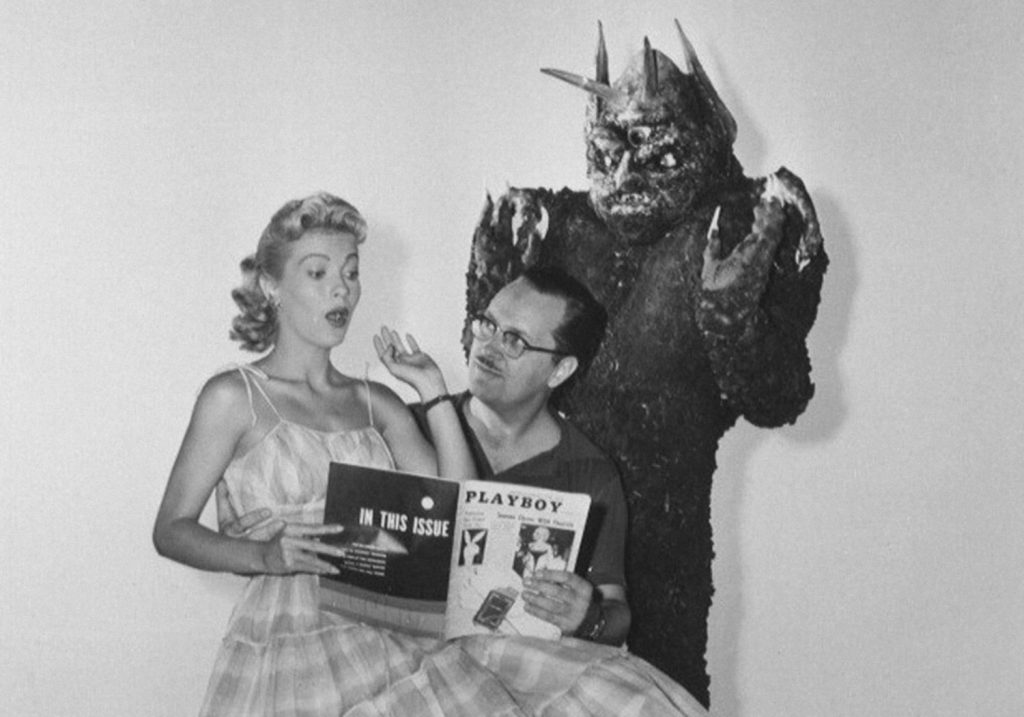
During the shoot, Blaisdell struggled to walk and maintain his balance while filming scenes in which the mutant recoils at, and is finally felled by a simple rain shower, a plot point being that fresh, pure water is lethal to a mutant adapted to survive in the toxic atmosphere of this irradiated, war-ravaged world. Because the foam rubber suit absorbed some of that practical-effects rain, the get-up became burdensomely heavy and uncomfortable!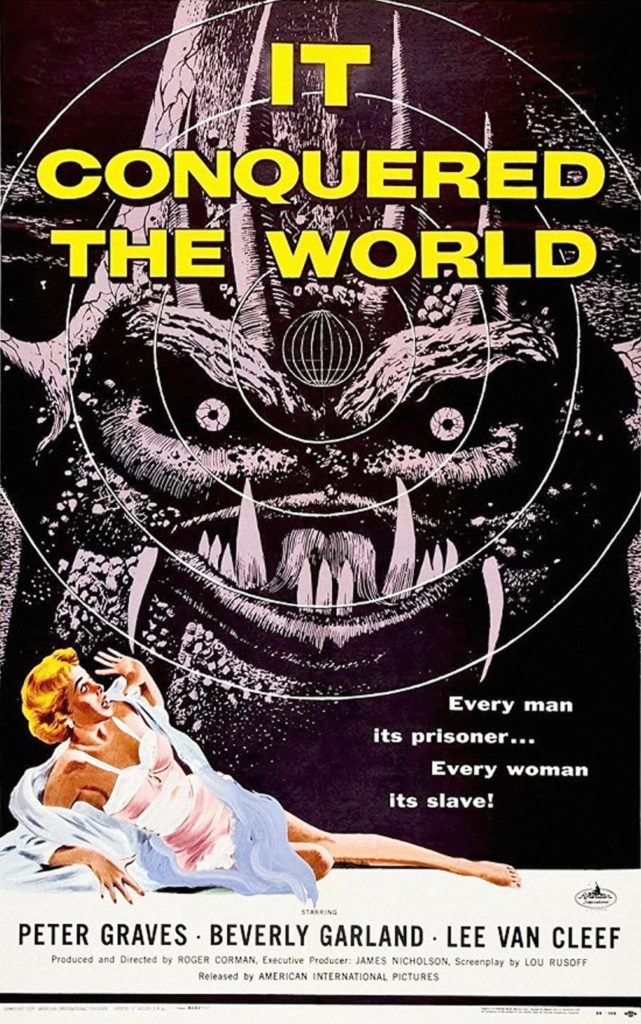
The stout, conical Venusian creature from 1956’s It Conquered the World, a static prop built on a wooden platform and operated from within, is one of the era’s most recognized, and ridiculed, movie monsters. Corman’s thinking was that a creature from Venus would have evolved to withstand the tremendous atmospheric pressures of the Veiled Planet, and so physically, its body would be short, squat, and robust.
Blaisdell speculated that a being from Venus might be more vegetable- than animal-like and he designed something as far removed from any kind of animal as he could imagine—a heavy-set, pear-shaped brute with textured skin akin to a cucumber’s and long, branch-like arms. His original take on the creature had it smaller and of a more squat stature, in accordance with director Corman’s vision, but when star Beverly Garland first saw the prop, she quipped sarcastically, “That conquered the world?” Corman realized a larger monster would be more effective and Blaisdell beefed up the design.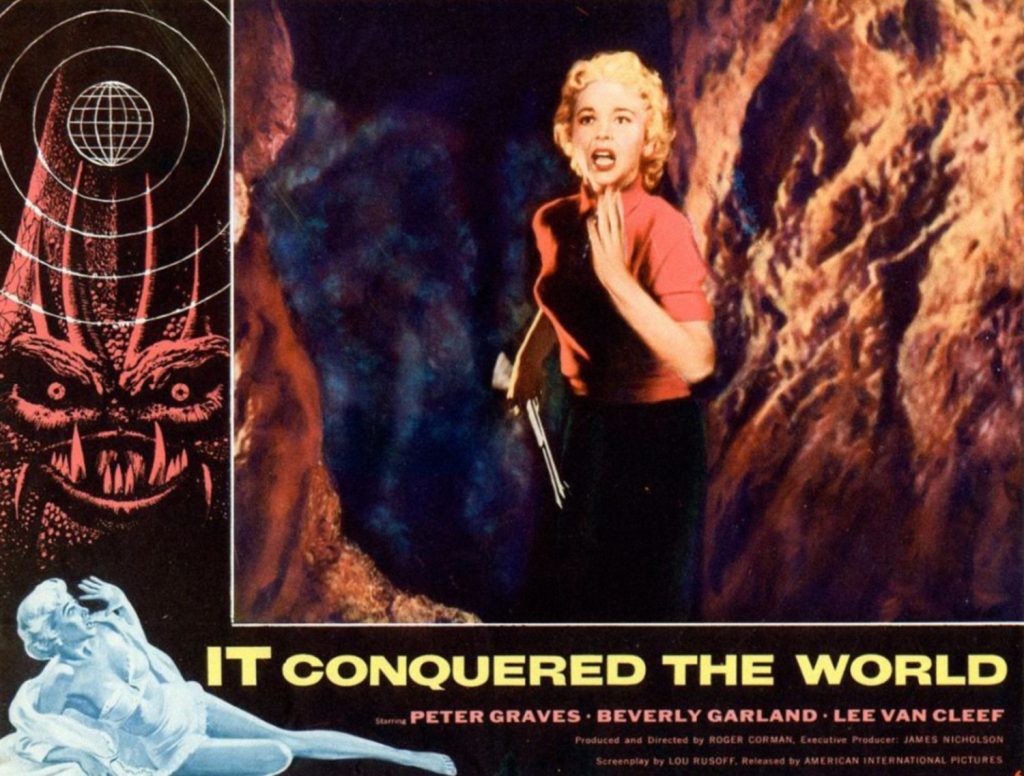
Well versed in science fiction literature, Blaisdell spoke extensively with Canadian-born screenwriter Lou Rusoff before the script was written and contributed many of the most interesting ideas that Rusoff would incorporate into his screenplay, including the bat-like, biomechanical “control devices” Blaisdell called “Flying Fingers.” These were deployed by the Venusian to implant mind-control widgets in those key people it needed to influence in order to take over the Earth. When Rusoff left suddenly to attend a family funeral back in Canada, Corman brought in Charles Griffith to do a final polish of the script two days before filming was scheduled to begin. Griffith also appeared in the film as a scientist.

The Venusian creature, which Paul and Jackie called “Beulah,” was rigged with a pneumatic system of cables to manipulate the pincers at the end of the creature’s long, mobile arms. The creature’s fangs were carved of pine and its antennae made of latex rubber. Illuminated flashlights served as its glowing eyes. Blaisdell had designed and built Beulah in accordance with the demands of the script; the enigmatic monster was only meant to be glimpsed briefly, in part, in shadow, or surrounded by the billowing vapours of the hot springs within the dark cavern from which it launched its plans of conquest. An old horror-movie adage states that the less of a monster an audience sees, the greater an aura of mystery and dread is engendered in that audience.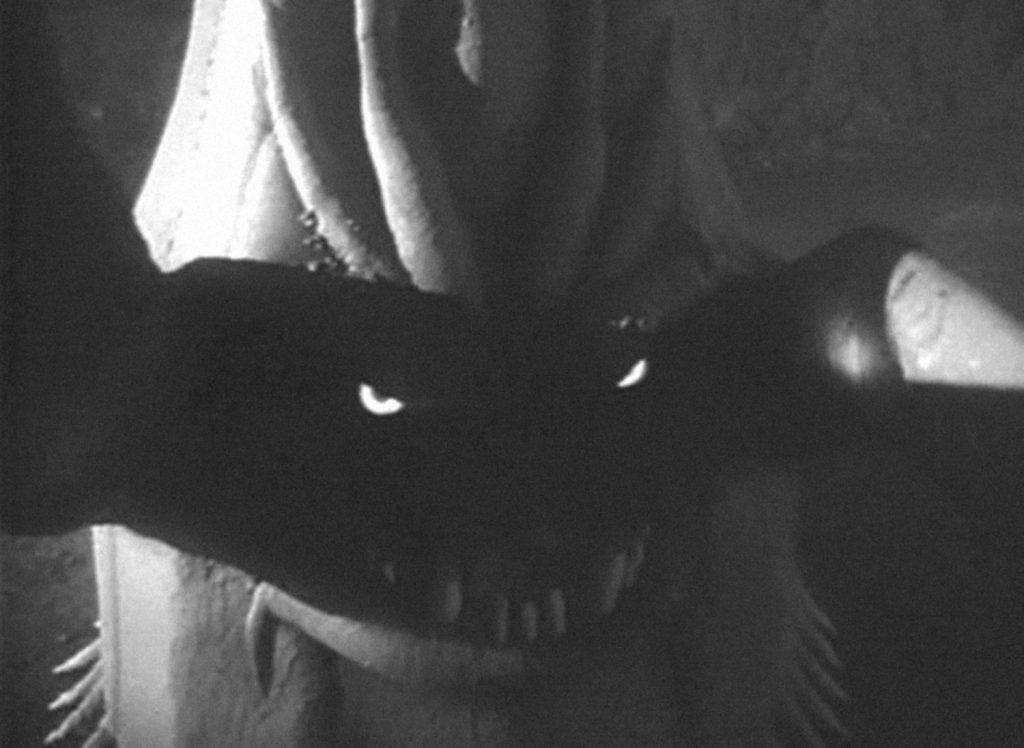
On the first day of filming, an accident on set damaged the mechanism inside the Venusian’s arms. Because Corman did not want to waste time or money waiting for repairs to be effected, Beulah was wheeled into place and performed with inoperative pincers, which flopped back and forth randomly as the camera rolled, lending to the production an unfortunate shoddiness.

Another incident saw Blaisdell, operating his creation, escape serious injury only because Jackie insisted he wear an army helmet to protect his head during the shooting of a scene in which a soldier charges the Venusian and stabs at the creature with his bayonet-affixed rifle. Blaisdell emerged afterwards with a noticeable scratch across his protective helmet, the bayonet having penetrated Beulah’s flimsy foam-rubber hide!
But it was Corman’s reluctance to fall behind schedule when filming the climatic closing scenes that totally ruined for many an otherwise pretty decent sci-fi movie.
The scenes shot in L.A.’s Bronson Canyon were filmed in natural light, but as the day wore on and the light faded, it became too dark to film inside the cave location where was positioned Beulah. Portable electric lights were available but Corman didn’t want to take the time to fetch them and set up. He opted to simply have the creature move out of the cave into the brightness of day, where it would confront a squad of soldiers.
Beulah was not built to be ambulatory! And, revealing the Venusian fully in the stark light of day was in marked contrast to the script’s philosophy of keeping its monster in the shadows so as to maintain an unease.
Further, Corman decided the Venusian would fall over dying as it grappled with blow torch-wielding star Lee Van Cleef, dispatching him with its final breath. Such action was completely outside of Beulah’s design parameters, and the sequence ended up looking patently ridiculous, as confirmed by the premiere audience, who burst into laughter as the scene unfolded. Blaisdell walked out of that premiere certain that he would never work in motion pictures again.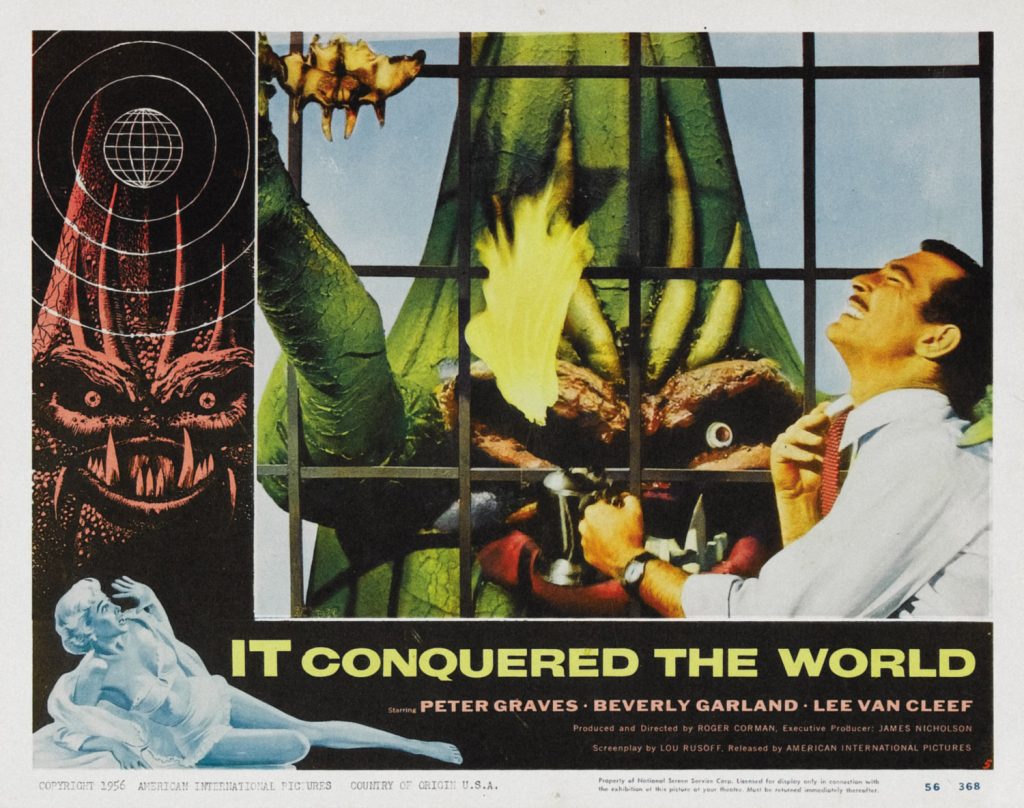
Corman had veered off course by attempting that for which Beulah was not designed, and the film suffers as a result. The failure of that embarrassing finale was no fault of Blaisdell’s, who had produced what he was hired to produce, a memorable movie monster that, had the intended approach been followed, would have effectively delivered the goods.
It Conquered the World was released on a double-bill with Edward L. Cahn’s The She-Creature. Blaisdell’s She-Creature costume, dubbed “Cuddles,” rivals his It: The Terror from Beyond Space suit as his best work. Paul’s established method of making movie monsters was on exceptional display for this horror movie. The film explores the idea of hypnotic regression and was inspired by the best-selling book The Search for Bridey Murphy, about a woman who claimed to have lived a past life as a 19th-century Irishwoman.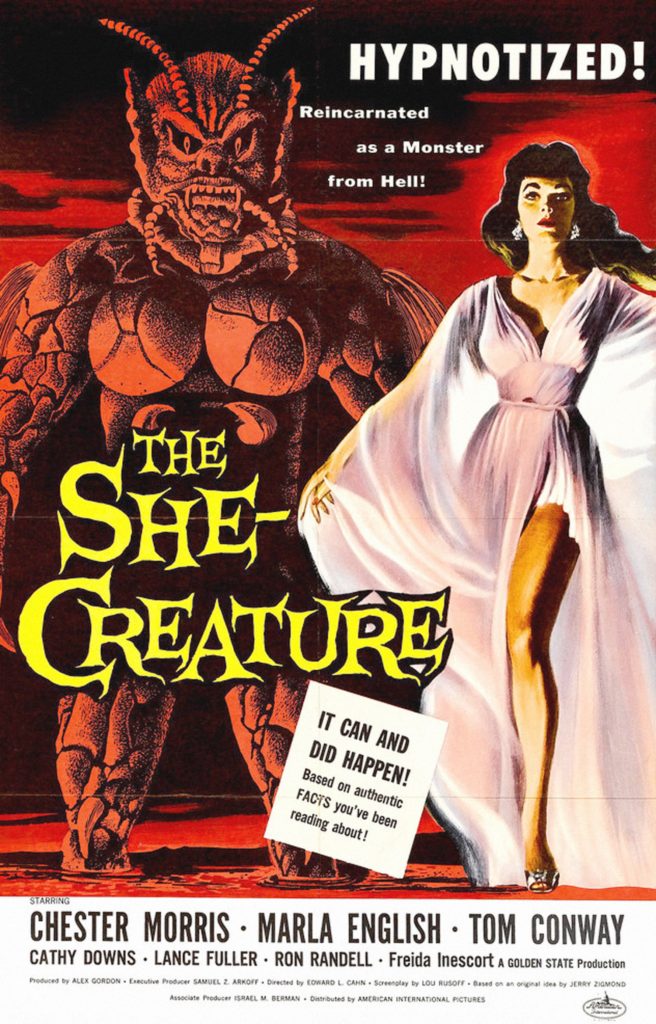
Here, our heroine’s past life goes all the way back to prehistoric times, when she lived as the ancient aquatic humanoid creature of the film’s title.
While Corman did not suffer schedule or budget overruns gladly, and was wont to revamp on the fly, as he did on It Conquered the World, Cahn, who worked quickly and efficiently, pretty much stuck to the script. Blaisdell appreciated the time he and Jackie were allotted to construct the full-body She-Creature appliance—weeks rather than days! Blaisdell often commented, with regard to his monster suits, that he could have done better work with more time, not to mention money. As if to make that case, today, the She-Creature is regarded as amongst the best movie monsters of the 1950s.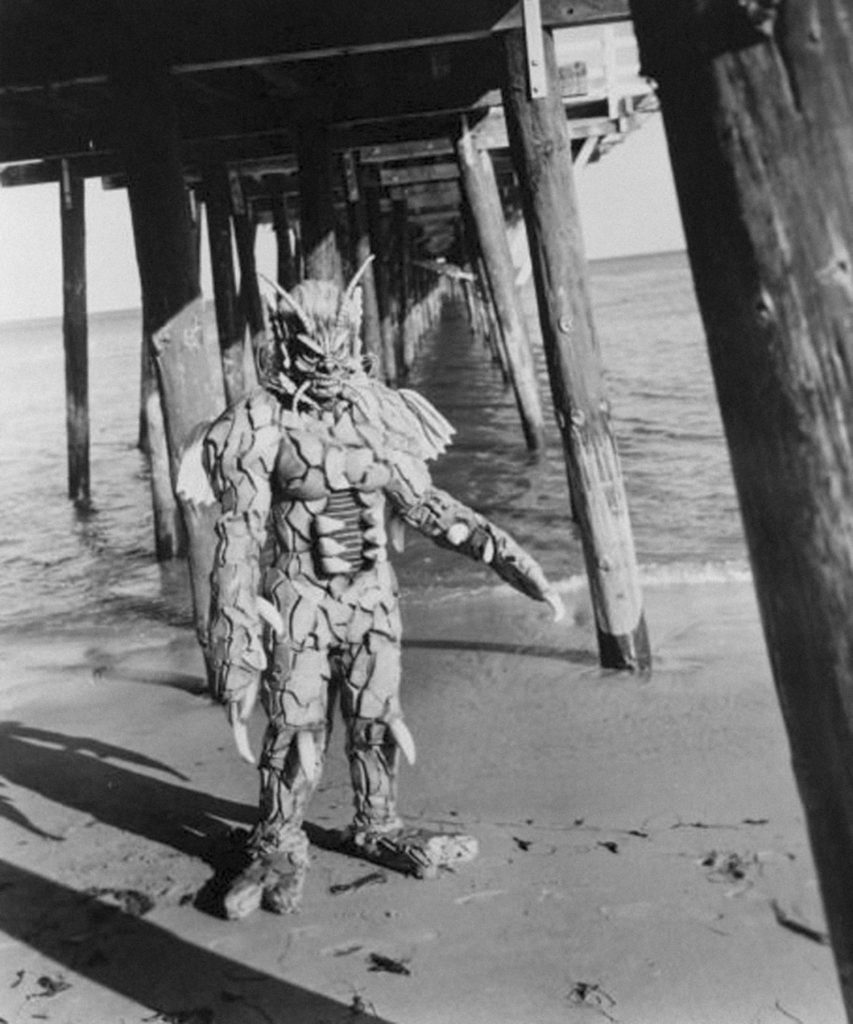
At about this time, Blaisdell contributed to another hypnotic regression-themed project, Corman’s The Undead, released in early 1957. For this production, he modified a couple of his It Conquered the World Flying Fingers to double as bats, and also cameoed in the picture as a corpse! That same year, he appeared, as well, in AIP’s teen-oriented Hot Rod Girl, playing an accident victim.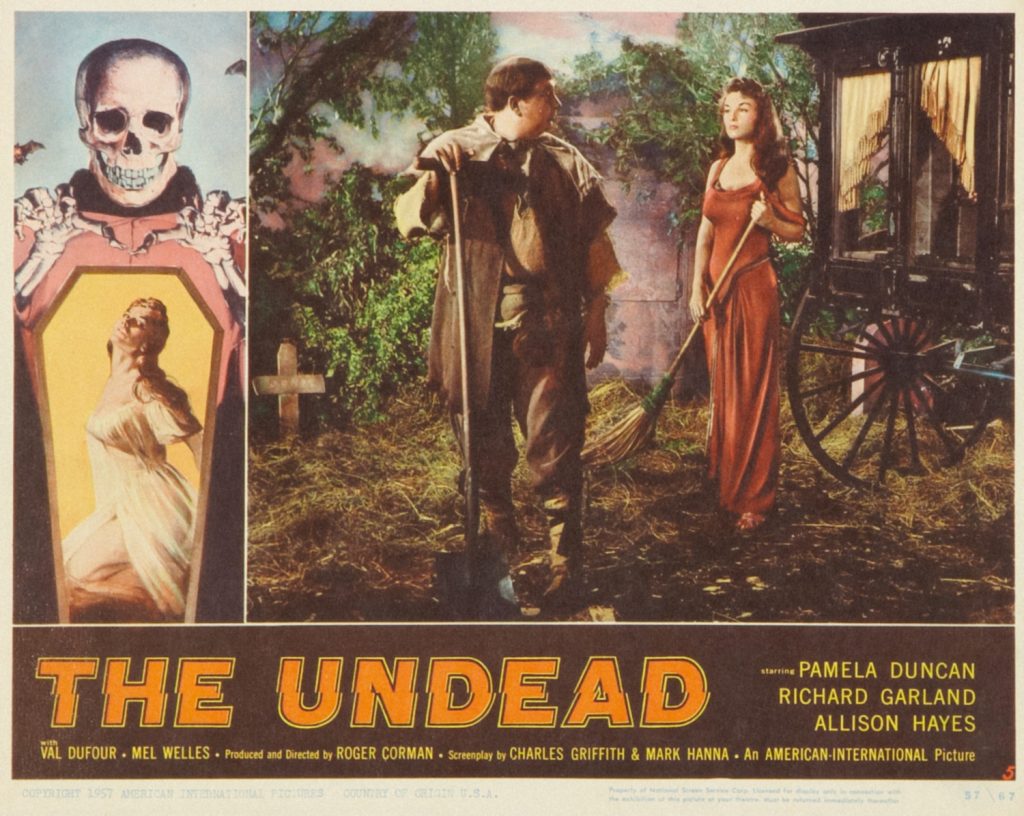
Blaisdell was a busy man; his growing reputation for turning out good quality work on tight schedules, and even tighter budgets, had his services much in demand.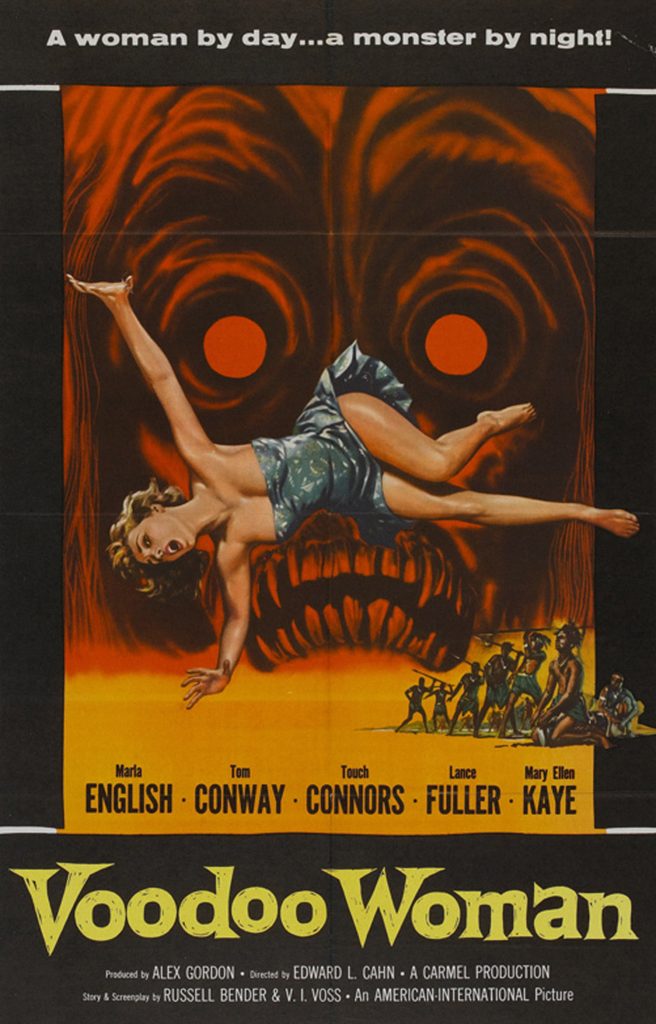
For Cahn’s supernatural magic/mad-scientist shocker Voodoo Woman, Paul stripped down his She-Creature outfit and wrapped himself in a sarong. The busy Blaisdell had agreed to take part in the production on the condition that someone else be found to design and fashion the headpiece. But when he saw what was presented—a simple, novelty skull mask topped with a blond wig—he couldn’t help but take the time to make a few quick improvements, building up the basic Halloween mask into something more respectable. But he was never entirely happy with this monster suit as it had been thrown together quickly, and wasn’t fully his own.

The best, and worst, was to yet come.
Join us again next month, on Saturday June 4, right here at www.MonSFFA.ca, for Part II of our look at the legacy of movie monster-maker Paul Blaisdell.